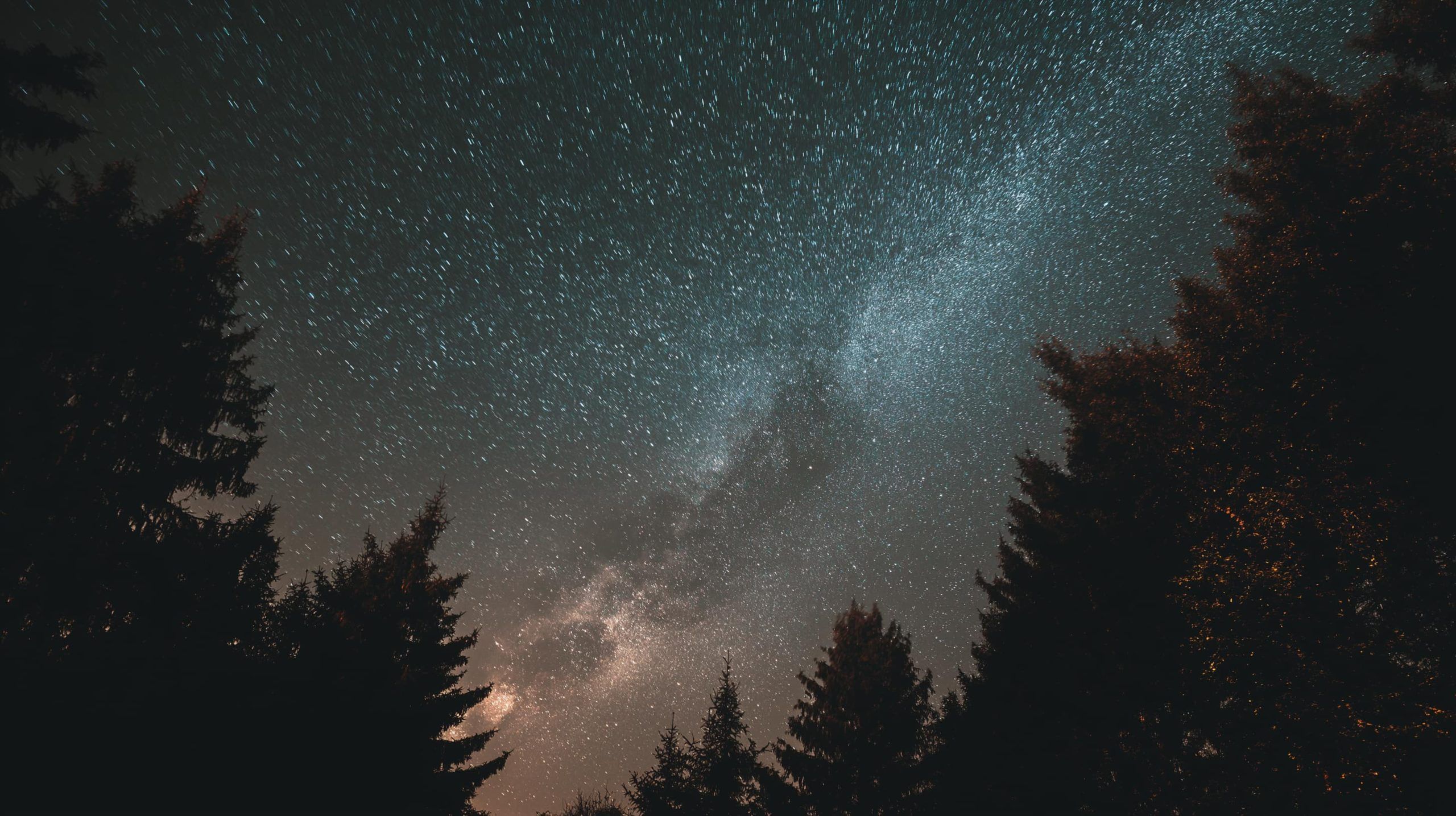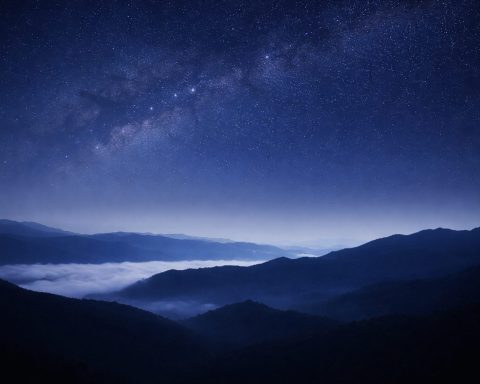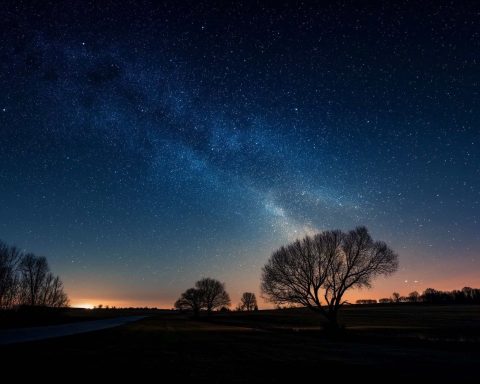- The Perseids peak on Aug 12–13 and officially continue through Aug 23, so on Aug 20–21 you may still catch a few meteors, with rates around 10–20 per hour under darker skies when the Moon is about 8% illuminated on Aug 20 and 3% on Aug 21.
- The Kappa Cygnid shower peaks around Aug 18 with roughly 3 meteors per hour, and it’s known for occasional bright fireballs that can stand out against Perseid activity.
- For these nights, late‑night to pre‑dawn hours are best for meteor watching, with Perseids radiating from the northeast in Perseus and Kappa Cygnids radiating from near Cygnus/Draco.
- Expect a modest background of about 10 sporadic meteors per hour toward dawn in the Northern Hemisphere, in addition to the shower activity.
- On Aug 20–21, a dawn planetary parade unfolds as Venus and Jupiter form a bright triangle with a slender crescent Moon before sunrise, and Mercury is near the horizon at its greatest western elongation on Aug 19, about 19° from the Sun and around magnitude 0.
- From Aug 19–21, up to six planets—Mercury, Venus, Jupiter, Saturn, Uranus (mag ~5.7), and Neptune (mag ~7.8)—could be above the horizon in the pre‑dawn sky.
- Saturn is near its prime visibility on Aug 20–21, rising around 8:30–9:00 PM local time and shining at magnitude +0.4 to +0.6, with its rings tilted and Titan’s shadow predicted to transit Saturn on Aug 21.
- Mars remains essentially invisible in August 2025, being too close to the Sun, dim (roughly as bright as the brighter stars of the Big Dipper), and setting in the west after sunset.
- The International Space Station often has predawn passes around Aug 18–21 for mid‑northern latitudes (examples: Warsaw about 4:30 AM, New York about 5:00 AM), and SpaceX launched 24 Starlink satellites on Aug 17 forming trains visible shortly after sunset or before sunrise.
- Notable space events in this window include the Aug 20 Soyuz 2.1a launch from Baikonur carrying Bion‑M No.2, and the Aug 21 Falcon 9 launch of USSF‑36 with the X‑37B, with NASA Wallops TOMEX+ sounding rockets operating Aug 18–Sep 3.
Meteor Showers: Perseids (and More) Still Sparkling
Mid-to-late August means the Perseid meteor shower is still active, even though its peak on August 12–13 has passed [1]. The Perseids officially continue through August 23 [2], so on the nights of August 20 and 21, 2025 you may still catch a few “shooting stars” each hour streaking across the sky. In a dark sky with no Moon, the Perseids can normally produce up to 50–100 meteors per hour at their peak under ideal conditions [3]. However, this year a bright Moon washed out many of the fainter meteors during the peak (experts had warned only ~10–20 per hour might be visible under the glare) [4]. “Instead, you’re probably going to see 10 to 20 per hour or fewer, and that’s because we have a bright Moon in the sky washing out the fainter meteors,” explained Bill Cooke, lead of NASA’s Meteoroid Environment Office, ahead of the peak [5]. The good news is that by August 20–21 the Moon is a thin waning crescent (only ~8% illuminated on Aug 20, and ~3% by Aug 21) – effectively no moonlight interference [6]. This gives darker skies and a fighting chance to spot remaining Perseids. You might see on the order of just a few meteors per hour, especially in the late-night to pre-dawn hours when Earth is plowing head-on into the meteor stream [7]. Occasional bright fireballs are still possible – Perseid meteors (debris from Comet Swift–Tuttle) are known for producing spectacular streaks that sometimes leave lingering glowing trails [8]. So while the Perseid rates are way down from their peak, any stray meteor you catch now will stand out nicely against the moonless sky.
Another meteor source to watch for these nights is the Kappa Cygnid shower. It’s a minor shower (only a few meteors per hour at best) that peaked around mid-August [9]. The Perseids are the main act, but if you see a slow, dramatic fireball that doesn’t trace back to Perseus, it could be a tell-tale Kappa Cygnid. These meteors are few but famous for the occasional bright fireball. In fact, at their August 18 peak the Kappa Cygnids only produce ~3 meteors per hour – vastly outnumbered by Perseids – yet they “have delivered memorable fireballs in past years,” according to NASA’s Astronomy Picture of the Day [10]. Consider the Kappa Cygnids the grand finale after the Perseids: most of the time you won’t see many, but there’s a chance of an eye-popping meteor streaking slowly across the sky that isn’t from the Perseid swarm [11].
When and how to watch: For any meteors, the late-night to pre-dawn hours are best (after midnight until dawn) once the meteor shower’s radiant is higher in the sky [12]. On August 20–21, the Perseid radiant (in the constellation Perseus) rises in the northeast and climbs higher through the night, while the Kappa Cygnid radiant (near the Cygnus/Draco border) is high overhead in late evening for mid-northern latitudes [13]. Find a dark location away from city lights, get comfortable (a reclining chair or blanket helps), and be patient – meteors often come in spurts with lulls in between [14]. Let your eyes adapt to the dark for ~20 minutes, and scan the sky broadly (you don’t need binoculars or telescopes) [15]. Meteors can appear anywhere, though Perseid meteors will all trace back to the northeast part of the sky (near Perseus) if you follow their trails backward [16]. Kappa Cygnids, on the other hand, will seem to radiate from the northern sky near Cygnus/Draco [17]. Keep in mind the meteors you see might also include some sporadics (random background meteors not from any major shower) – on a typical August night, a dark-sky location might get ~10 sporadic meteors per hour toward dawn in the northern hemisphere [18] [19]. All combined, you could still see a modest sprinkling of meteors on these warm summer nights. “The Perseids are one of the most anticipated celestial events of the year,” as one astronomy outlet noted, and even in this somewhat muted year, the brightest meteors can still wow skywatchers [20]. So bundle up a bit, face north or northeast, and enjoy the last sparks of the Perseids under dark August skies.
Where to see: The Perseids (and Kappa Cygnids) heavily favor the Northern Hemisphere. In mid-northern latitudes, Perseid rates could be a few per hour (and possibly a stray Kappa Cygnid) [21] [22]. By contrast, Southern Hemisphere observers will see far fewer Perseids – the Perseid radiant barely peeks above the horizon before dawn, so only a handful of meteors at best might be caught, and the Kappa Cygnid radiant is essentially not visible from southern latitudes [23]. If you’re in the Southern Hemisphere, you unfortunately won’t get much of the Perseids’ show. You might instead remember the Southern Delta Aquariids, which were active in July and early August (they produced ~15–20 meteors/hour at peak [24]), or simply enjoy the brilliant Milky Way arching overhead on these moonless nights. In fact, late winter is a great time down south to appreciate the Milky Way galaxy’s center high in the sky. But for August 20–21 specifically, northern skywatchers have the better meteoric show [25]. Wherever you are, give yourself at least an hour of watching (to account for meteor lulls) and keep your expectations realistic – this is the tail end of the Perseids, not the peak. Every meteor you catch is a tiny bit of comet dust burning up for your entertainment.
Auroras & Space Weather: Will the Northern Lights Dance?
The Northern Lights (aurora borealis) may make an appearance on these nights, thanks to some timely space weather. The Sun is currently near the peak of its 11-year activity cycle (the solar maximum of 2025), which means we’re seeing more frequent solar storms – and thus a higher chance for auroras lighting up the Earth’s skies [26]. Auroras occur when eruptions on the Sun (like solar flares or coronal mass ejections) send charged particles toward Earth, sparking geomagnetic storms that cause shimmering curtains of colored light in the upper atmosphere [27]. Recently, solar activity has indeed been intense; for example, an extreme geomagnetic storm in May 2024 brought the aurora as far south as California and Arizona – an incredibly rare low-latitude aurora sighting [28].
For August 19–20, 2025, space-weather forecasters were monitoring a couple of solar features expected to reach Earth. In fact, the NASA/NOAA forecast predicted a stream of fast solar wind from a coronal hole would arrive around Aug 18–19, likely sparking G1-class (minor) geomagnetic storms on Aug 19 and possibly into Aug 20 [29]. In addition, a small coronal mass ejection (CME) that erupted a few days prior was calculated to possibly graze Earth in that timeframe (late Aug 19 or early Aug 20), potentially enhancing the auroral activity if it arrived concurrently [30]. In other words, the space weather outlook was promising for minor auroral displays: the official forecast called for unsettled magnetic conditions building late Aug 18, with Kp 5 (minor storm) likely on Aug 19 and continued active periods into Aug 20 [31]. Bottom line: there is no guarantee of an aurora outburst on these nights, but the ingredients are there for at least a modest show if the solar wind behaves as predicted [32].
Who might see it? Generally, a G1 geomagnetic storm means auroras mostly confined to high latitudes. If you live in the northern-tier U.S. (around 50° N latitude or above) – think southern Canada, Alaska, northern Europe (Scotland, Scandinavia) – or in the far Southern Hemisphere (e.g. New Zealand, Tasmania, or Patagonia for the aurora australis), you have a chance to spot the auroras on the nights around Aug 19–20 [33] [34]. The anticipated auroral display would likely be moderate, not the all-sky zenith-filling auroras of a major geomagnetic storm. Instead, observers might see a faint greenish or reddish glow low on the horizon, or gentle pulses of light, especially toward local midnight and the early morning hours (when geomagnetic activity often peaks) [35] [36]. To maximize your chances, find a location with a clear view of the northern horizon (or southern horizon if you’re in the Southern Hemisphere) and away from light pollution [37]. Even a minor aurora can be drowned out by city lights, so rural dark areas are best. Look north (or south) periodically after nightfall – sometimes auroras start as a subtle whitish or greenish glow that could be mistaken for distant city light or thin clouds, and then intensify or form curtains. The best window is around local midnight to 2–3 AM. If you’re in the potential viewing zone, keep an eye on real-time aurora alerts (NOAA’s Space Weather Prediction Center, or apps like SpaceWeatherLive can be helpful) [38].
Experts urge optimism with a dash of caution. “With the Sun so active, we anticipate additional solar and geomagnetic storms leading to opportunities to spot aurora over the next several months,” notes Dr. Kelly Korreck, a NASA heliophysicist [39]. In other words, we’re in an aurora-rich period, but predicting a specific night’s aurora is tricky. NOAA Space Weather Center coordinator Bill Murtagh explains that “The bigger the storm, the more visible the aurora, [and] the further south it’s visible.” [40] In this case, the expected Aug 19–20 disturbance is on the mild side, so auroras will likely “dance around the polar regions” (higher latitudes) rather than dipping very far south [41]. That said, solar forecasts can change with little notice – a surprise flare or CME could always increase the show. It never hurts to look up if you’re in a place that might see the Northern Lights. At the very least, even if the aurora remains elusive or faint, you’ll still have clear, dark skies to enjoy the stars, planets, and meteors. And if a lucky auroral glow does emerge on the horizon, you’ll be ready to catch a glimpse of one of nature’s most beautiful phenomena.
(Note: “Northern Lights” refers to the aurora borealis in the Northern Hemisphere; in the Southern Hemisphere it’s the aurora australis. The same solar storm can produce both – just face toward the nearest polar region.)
Planets & Alignments: A Dawn Planet Parade and Evening Highlights
August 2025 offers a smorgasbord of planets in the sky – in fact, all five naked-eye planets (and even the two outer giants with optical aid) are visible at some point. Over August 20–21, the most spectacular gathering occurs before sunrise: a multi-planet “parade” in the dawn sky. Early risers are treated to a gorgeous alignment of Venus, Jupiter, and a crescent Moon at daybreak, plus opportunities to spot Mercury near the horizon, Saturn shining all night, and even Uranus/Neptune for telescope users. Here’s what to look for:
Simulated view of the eastern pre-dawn sky on Aug. 20, 2025, showing the slender crescent Moon joining brilliant Venus and Jupiter before sunrise. Mercury is just above the horizon, while bright stars Castor and Pollux in Gemini lie to the Moon’s left [42] [43].
- Venus & Jupiter Meet the Crescent Moon (Dazzling Dawn Trio): In the hours before sunrise on August 20, look toward the east to find the two brightest planets Venus and Jupiter shining close together, now joined by an ultra-thin waning crescent Moon. Venus and Jupiter had an extremely close conjunction (~0.8° apart) back on Aug 11–12 – “one of the flashiest sights of the year,” according to NASA [44] – and by the 19th–20th they still remain only a few degrees apart in the sky [45]. Venus blazes super-bright (around magnitude –4), easily the most brilliant point of light in the pre-dawn sky (hence its nickname the “Morning Star”) [46]. Jupiter appears nearby, a bit fainter (around mag –2) but still brighter than any true star in the morning sky [47] – it will have a steady golden-white glow (planets twinkle less than stars). On the morning of Aug 19, the slender Moon was positioned about 7° above Jupiter [48], forming a lovely triangle with Venus a little lower down. By the next morning (Aug 20), the Moon has moved eastward in its orbit and will appear just a few degrees from Venus instead [49], now making a striking triangle with Jupiter above. In both cases, around these dates, Venus + Jupiter + the Moon create a must-see tableau in the pre-dawn sky [50]. It’s a perfect photo opportunity and a stunning sight even to the naked eye – picture a delicate crescent Moon (with “earthshine” softly illuminating its dark side) nestled near two brilliant planet beacons. When and where to look: Start watching about 90–120 minutes before your local sunrise (roughly 4:00–5:00 AM local time, depending on latitude, for mid-northern observers) [51]. Face east. Venus will be roughly 20–30° above the horizon at that time (1–2 hand-spans at arm’s length) [52], with Jupiter slightly above and left of Venus. The Moon on Aug 20 will be just below Venus (and on Aug 21, the Moon will have essentially disappeared into the sunrise glare as it approaches new phase). By dawn’s early light, these three objects will be among the last points visible against the brightening sky – easily visible even from cities (Venus and the Moon are so bright they pierce through moderate light pollution) [53]. Be sure to look before sunrise twilight becomes too strong, or you’ll lose them in the growing glare. This kind of multi-planet meetup is sometimes nicknamed a “planetary parade.” In fact, around Aug 18–20, six of the planets plus the Moon are above the horizon simultaneously in the pre-dawn hours (more on that below) [54]. For now, don’t miss the simple beauty of this dawn triangle – it’s one of those serene moments where you can see Moon, planets, and stars all at once with your unaided eyes.
- Six-Planet Lineup at Dawn (Mercury through Neptune): If you’re an early-bird skywatcher up before sunrise, you can attempt an expert-level challenge: spotting six planets at once in the morning sky. On the mornings of Aug 19, 20, and 21, the geometry of the solar system is such that Mercury, Venus, Jupiter, Saturn, Uranus, and Neptune are all above the horizon in the same pre-dawn timeframe [55] (along with the Moon until it becomes too close to the Sun after the 20th). The catch, of course, is that not all are easy to see! Here’s the breakdown: Venus and Jupiter we’ve covered – they’re the obvious ones, high in the east and brilliant. Mercury is much trickier – it’s very low near the eastern horizon in the brightening twilight. Around August 19–21, Mercury is actually at its greatest western elongation (its farthest distance from the Sun in the morning sky) on Aug 19 [56], sitting about 19° away from the Sun and shining around magnitude 0 [57] (as bright as a medium-bright star). You’ll need to look about 30–45 minutes before sunrise to have any chance, as Mercury will hug the horizon and quickly vanish in the dawn light [58] [59]. Northern Hemisphere observers have an edge for this Mercury elongation – the ecliptic (the Sun’s path) meets the horizon at a steep angle on summer mornings up north, which lifts Mercury a bit higher in the sky relative to the sunrise [60]. (In fact, EarthSky notes that this August 19 elongation “favors the Northern Hemisphere” for that reason [61].) If you do spot tiny Mercury, congrats – many people have never seen it! Meanwhile, on the opposite side of the sky toward the west, you’ll find Saturn (more on Saturn in a moment) still up from the night before, hanging low in the west or southwest near dawn. Uranus and Neptune are the faint outer giants: Uranus (mag ~5.7) lies in Aries, roughly between Jupiter and Saturn’s positions in the sky, and can be just barely glimpsed with the naked eye under very dark skies – but more likely you’d need binoculars or a telescope to identify it as a tiny greenish starlike point [62] [63]. Neptune (mag ~7.8) is even dimmer and currently lies near Saturn in western Pisces – you will definitely need a telescope to see Neptune, appearing as a tiny bluish “star” [64] [65]. In practice, seeing all six planets at once is quite difficult and requires excellent conditions (clear horizon, dark sky for as long as possible) plus optical aid for the dim ones [66] [67]. But just knowing they’re all out there can be exciting. Even if you manage to catch 4 or 5 of them (say, Mercury, Venus, Jupiter, Saturn, and maybe Uranus), that’s a rare treat. These multi-planet alignments are more about cosmic geometry than a tight visual grouping – the planets will be spread across a wide span of sky from east to west [68]. Still, it’s fun to trace the planetary lineup along the ecliptic. As a bonus, many bright stars and constellations are present as signposts (for example, on Aug 20 at dawn you’ll see Castor and Pollux in Gemini near the Moon [69], Procyon in Canis Minor to the south, and so on [70]). If you have a sky map or an astronomy app, it can help pinpoint Uranus and Neptune’s positions relative to brighter stars [71]. But even without hunting the faint ones, simply enjoy the gorgeous Moon-Venus-Jupiter triangle and know that elusive Mercury is lurking near the horizon and Saturn is still glimmering low in the west. Around 5 planets visible to the unaided eye (counting Mercury barely) is a pretty good haul for one morning!
- Saturn – The Ringed Jewel at Its Best:Saturn is coming into its prime viewing season, effectively visible all night in late August 2025. In fact, Saturn is nearing its yearly opposition (when it lies opposite the Sun in our sky and at its closest and brightest for the year) – the exact opposition occurs on September 21, 2025 [72]. But already on Aug 20–21, Saturn is essentially at peak visibility: a moderately bright, yellowish “star” that rises in the mid-evening and remains up until dawn. Saturn will be shining around magnitude +0.4 to +0.6 during these nights [73], which is about as bright as it gets. Look for it in the constellation Aquarius (near the Aquarius-Pisces border). Saturn doesn’t twinkle much; it has a steady golden light. According to NASA, in early August Saturn was rising by ~10:30 p.m., and by late August it rises around 8:30–9 p.m. local time [74]. By the nights of Aug 20–21, Saturn comes up in the east-southeast by around 9 p.m. (local) and climbs higher through the late night [75]. By midnight, you’ll find Saturn high in the southern sky, and it tracks over to the west by dawn [76]. In short, you can enjoy Saturn at any time of night once it’s risen – it will be one of the brightest “stars” in the late evening and an eye-catching object if you know to look for that distinct golden hue. If you have binoculars or a small telescope, definitely take a peek – even a modest scope will reveal Saturn’s famous rings (which are tilted at an angle to us) and maybe a few of its moons like Titan. Saturn’s largest moon Titan is actually having an interesting event this week: on Aug 21, Titan’s shadow will transit (cross) Saturn, a treat for telescopic observers [77]. But even without magnification, just appreciating Saturn’s steady glow, knowing you’re looking at a planet ~1.4 billion km away, is thrilling. As the night of Aug 20 or 21 wears on, you can observe Saturn sinking toward the west by early morning, just as Venus and Jupiter are rising in the east – a beautiful handoff of the planetary baton across the sky.
- Mars and Others: What about Mars? Unfortunately, Mars is the odd one out this month – it’s too close to the Sun to be visible at dawn, and it sets very soon after sunset in the evenings [78]. Mars has been fading in brightness since its last opposition (which was in late 2022); by August 2025 it’s relatively dim (about as bright as the brighter stars of the Big Dipper) and very low in the west after sunset [79] [80]. If you have a clear view toward the western horizon, you might glimpse Mars as a ruddy point of light in twilight, but it won’t be easy. Essentially, Mars is not a significant player in the night sky right now – consider it on hiatus until it emerges in the morning sky later in the year. Jupiter and Venus, as covered, are brilliant in the morning. Mercury is peeking above the horizon at dawn for those who seek it [81] [82]. Uranus and Neptune require effort with optics but are technically present (Uranus is in Aries, Neptune in Pisces, both positioned in the late-night/morning sky) [83] [84]. If you’re up late on Aug 20 or 21, also note the twinkling stars of the summer constellations: for instance, Vega (overhead in Lyra) and Altair (to the south in Aquila) form the Summer Triangle with Deneb, and the Milky Way’s glow runs through that region. With the Moon nearly absent these nights, it’s an excellent opportunity to also appreciate deep-sky sights: the Milky Way band, star clusters, and nebulas visible with binoculars in constellations like Sagittarius and Cygnus. August’s dark nights are a gift for stargazers. So whether you focus on the planetary trio at dawn or just soak in the stars, these nights offer a planetarium’s worth of delights in the real sky.
ISS & Satellites: The Space Station Glides By
While you’re out gazing at natural wonders, keep an eye out for human-made “stars” silently cruising overhead. Chief among them is the International Space Station (ISS) – the largest man-made object in orbit – which often makes impressively bright flybys at dawn or dusk. The ISS orbits Earth about every 90 minutes, so it can pass overhead multiple times per night if the timing is right [85]. It appears as a bright, steady-moving light (it doesn’t blink like a plane) gliding across the sky over a few minutes. When and where it’s visible depends on your location and the Station’s orbital track. In mid-August 2025, the ISS happens to be making predawn passes for many locations at mid-northerly latitudes. For example, around this week the ISS was visible before sunrise in parts of Europe and North America – skywatchers in Warsaw saw a bright pass around 4:30 AM local time on Aug 15, and New York had a pass just before 5:00 AM local time [86]. Similar early-morning flyovers are expected to continue for various locales as we approach Aug 20–21 [87]. (At other times or other latitudes, the ISS might be visible in the evening instead – it varies on a roughly 6-week cycle.) The key is that sighting opportunities occur within an hour or two of sunset or sunrise – that’s when the ground is dark but the ISS is high enough to still catch sunlight, so it glows against the night sky [88].
To know if/when the ISS will pass over your area on August 20 or 21, it’s best to use a tracking tool. NASA’s Spot the Station service and the popular Heavens-Above website will give you precise flyover times, directions, and brightness for your town [89]. Typically, an ISS pass will start with it appearing as a bright “star” rising above one horizon (often west or northwest for morning passes), then it arcs across the sky and disappears toward the opposite horizon (often east or southeast), or sometimes it will “wink out” when it slips into Earth’s shadow partway through the pass [90] [91]. The ISS can rival Venus in brightness, so if one is overhead just before dawn or after dusk, you won’t miss it – it’s often the brightest moving point of light in the sky. It’s also a fun thought that astronauts are aboard, so give a wave as that bright dot sails by! As one skywatching writer put it, the ISS is the star of human-made sky objects – a tangible reminder of humanity’s presence in orbit [92].
Aside from the ISS, you might catch other satellites gliding by. For instance, China’s Tiangong space station occasionally passes over and shines with a similar steady light (though generally a bit dimmer than ISS). If you know when to look, Tiangong can be spotted as well. Additionally, SpaceX Starlink satellite “trains” have become a new phenomenon in recent years. When SpaceX launches a batch of Starlink internet satellites, they initially orbit in a tight sequence – observers on the ground sometimes see a chain of dozens of lights moving one after another across the sky, which can be an eerie but fascinating sight [93]. (In fact, many people have been startled by these and even reported them as possible UFO fleets before learning what they are!) These satellite trains are most noticeable in the days right after a launch, when the satellites haven’t dispersed much [94]. As luck would have it, SpaceX just launched a Falcon 9 on Aug 17 carrying 24 Starlink satellites [95]. That launch happened in daylight, so it wasn’t visible at night, but the newly launched Starlinks are now orbiting and gradually spreading out [96]. If you’re out under dark skies and you see a line of faint lights moving in unison, you’ve likely spotted this Starlink train. They tend to be visible shortly after sunset or before sunrise (same reason: catching sunlight while it’s dark on the ground). Each individual Starlink isn’t very bright (often they look like a string of 4th- to 6th-magnitude “stars”), but their formation can be striking. Over time, they will drift apart and become less obvious. So this week of Aug 20–21 is a prime window to possibly catch that Starlink string-of-pearls if one of the passes goes over your area [97]. Heavens-Above can also show Starlink pass predictions. Keep in mind, though, the Starlink brightness and visibility can vary with viewing angle and satellite orientation.
All told, the star of the show remains the ISS – it’s the brightest and most reliably impressive satellite to spot. If you’ve never seen the Space Station, make it a goal on these nights. There’s something awe-inspiring about watching a bright point of light that is actually a habitable outpost with humans on board, traveling 28,000 km/h above you. It’s a small preview of humanity’s growing presence in the skies. And the mix of satellites and spacecraft passing by only adds to the sense that our night sky is becoming a busy place.
Rocket Launches & Space Events: Human Ventures Light Up the Sky
Space agencies and companies aren’t taking a break – several rocket launches and missions coincide with these dates, adding to the skywatching excitement (even if they’re not directly visible to everyone). Here are a few notable space events around August 20–21, 2025:
- Aug 20 (Baikonur, Kazakhstan) – Soyuz Launch: Russia’s Roscosmos is scheduled to launch a Soyuz 2.1a rocket on August 20 from the Baikonur Cosmodrome [98]. The payload is the Bion-M No.2 satellite, a research mission carrying a host of biological experiments (including living animals and plants) into orbit [99]. The Bion-M series is designed to study the effects of spaceflight on organisms – essentially a small science zoo in space. This launch is set for local daytime in Kazakhstan, so it won’t create any night-sky spectacle for most of us. However, if you happen to be in the vicinity of Baikonur or downrange, a rocket rising could be seen. For the rest of us, it’s still an interesting newsworthy event: a reminder that on Aug 20, while you’re watching the night sky, a capsule of turtles, mice, and bacteria (among other specimens) will be heading to orbit!
- Aug 21 (Florida, USA) – SpaceX Falcon 9 Launch with Spaceplane: On August 21, SpaceX is slated to launch a Falcon 9 rocket carrying the USSF-36 mission, which includes the U.S. Space Force’s X-37B spaceplane (Orbital Test Vehicle-8) [100]. The X-37B is an uncrewed, reusable mini-shuttle that conducts secretive experiments in orbit – sort of a robotic spaceplane. This launch is a high-profile one for SpaceX and the Space Force. Liftoff is planned from Florida’s Space Coast (likely Cape Canaveral). If it goes off at night or near dawn/dusk, Floridians might witness a spectacular ascent (rocket plume and perhaps a “twilight jellyfish” glow if the timing is right) [101]. However, for most skywatchers far from Florida, the launch won’t be directly visible (you’d need to be relatively close to see the rocket). Still, it’s exciting to know that on the night of Aug 21 a cutting-edge spaceplane will be riding into orbit. And sometimes, a day or two after launch, keen observers can try to spot the X-37B in orbit as an unusual satellite – though its orbit is often kept partially secret, hobbyists do track it.
- NASA Sounding Rockets (Virginia, USA): Starting Aug 18 and running through Sep 3, NASA’s Wallops Flight Facility in Virginia has a launch window for a series of sounding rocket launches at night [102]. The mission, called TOMEX+ (Turbulent Oxygen Mixing Experiment Plus), involves three suborbital rockets (two Terrier-Orion and one Black Brant IX) to probe the upper atmosphere [103]. The window each night is 10 p.m. to 6 a.m. EDT [104]. That means on the nights of Aug 20–21 (and 21–22), there is a chance one or more of these small rockets will blast off in the late-night or pre-dawn hours. These suborbital rockets don’t go into orbit; they shoot up to the upper atmosphere and then fall back down, often releasing vapors for scientists to track winds, etc. They’re relatively small vehicles, but if you live in the U.S. Mid-Atlantic region (e.g. Virginia, Maryland, Delaware, maybe as far as southern Pennsylvania/New Jersey), you might catch a brief glow or streak near the horizon when they launch [105]. Past Wallops launches have been visible as a moving point of light or quick streak to observers from several states away under clear night conditions [106]. NASA usually provides live updates via Wallops’s social media. It’s a localized event, but worth stepping outside if you’re nearby – for a few seconds you could see a rocket’s flare as it climbs skyward [107]. It’s a unique sight – a human-made meteor, in effect – and a reminder that science is being done in real-time above our heads.
- Space Debris Reentry: Just a few days before these nights, there was buzz about a large Chinese rocket stage expected to make an uncontrolled reentry around Aug 18–19 [108]. China launched a Long March 5B rocket on Aug 13, and its massive 20-metric-ton core stage was left in low orbit – set to tumble back to Earth in a random location [109]. Such reentries are hard to predict; even a day prior, the timing had several hours uncertainty (which translates to thousands of kilometers of possible landing zone) [110]. By the time you’re reading this on Aug 20, that reentry likely already happened (and, as is most often the case, probably ended up over an ocean or unpopulated area) [111] [112]. Why mention this now? Because if reentry had occurred over a populated region at night, people would have seen a spectacular fireball – essentially a huge man-made meteor breaking apart across the sky [113]. Videos from past incidents (like previous Long March 5B reentries) showed a train of bright fragments arcing overhead, like a slow-motion meteor shower. It’s a striking sight, but also a bit controversial. This particular core stage was one of the most massive objects to re-enter uncontrolled in decades, noted astronomer Jonathan McDowell [114], drawing criticism of the practice. The odds of debris hitting anyone were extremely low (Earth is mostly water and empty land) [115]. Indeed, we haven’t heard reports of damage, so it likely fell harmlessly. Still, it serves as a reminder that our skies are getting busy – not just with active satellites, but with space junk that occasionally comes back down. In this case, by Aug 20–21 you won’t see anything from it (it’s done), but it’s an interesting bit of current space news that coincided with these dates. And if you do ever witness a bizarre long-lasting fireball with multiple pieces, it just might be a re-entering spacecraft!
These rocket launches and space events highlight the flurry of human activity in space around mid-August. While most of us won’t directly see a Soyuz or Falcon 9 streaking overhead on these nights (unless you live near a launch site), it’s thrilling to know they’re happening. If you are near a launch site – say, coastal Florida, coastal Virginia, Vandenberg in California, or Baikonur – definitely take the chance to watch a launch in person. A rocket launch can be an unforgettable sight: a brilliant rocket plume lighting up the sky, and if the timing is right (near dawn or dusk) a glowing jellyfish-like nebula as the exhaust expands in sunlight [116]. For the rest of us, we can still look up and appreciate that while we enjoy meteor showers and planets, there are also people and machines actively reaching into space at that very moment.
Comets & Eclipses: Other Celestial Notes
You might be wondering about other celestial events, like comets or eclipses, during this period. For comet lovers, there are no bright comets gracing the August 2025 sky for casual observers. Currently, no major naked-eye comets are visible on Aug 20–21. There are a few faint comets in the sky, but only detectable with telescopes. For example, Comet C/2025 K1 (ATLAS) is out there in August – it passed about 0.58 AU from Earth on Aug 13 – but it’s extremely faint (around magnitude 13) at this time [117], visible only through large telescopes and primarily from the Southern Hemisphere [118]. However, later in 2025 we have something to look forward to: Comet C/2025 K1 (ATLAS) is expected to brighten significantly by late September and early October, possibly becoming a binocular-visible comet around magnitude 5–6 [119] [120] (if it survives its close pass by the Sun). So, while no comet will catch your eye on Aug 20–21, you can stay tuned for that one in the fall. Another comet, C/2025 A6 (Lemmon), might reach around 8th magnitude by late October [121]. And intriguingly, an interstellar comet 3I/ATLAS was spotted in 2025 (the first interstellar comet since 2I/Borisov in 2019) – though it’s not visible to amateurs now, it’s a reminder of the constant surprises in our solar system [122] [123]. In summary, no bright comets to see on these nights, but the next cometary visitor that could put on a show arrives in a couple of months.
As for eclipses: None are occurring on August 20 or 21. The year 2025 features two solar and two lunar eclipses, but they fall on other dates [124]. The next eclipse after this week will be a total lunar eclipse on the night of September 7–8, 2025, which will be visible across much of Europe, Africa, Asia, and Australia [125]. (Mark your calendar if you’re in those regions – a total lunar eclipse, or “blood moon,” is always a treat!) Later, on September 21, 2025, there will be a partial solar eclipse visible in parts of the Northern Hemisphere [126]. But for August 20–21, no eclipse is on the menu. That means the Moon’s slim crescent won’t be causing any dramatic Sun or Earth shadows – it’s simply adding to the dawn planet show as described earlier.
Finally, a quick note on the Moon phase: New Moon is on Aug 23, 2025, so on the nights of Aug 20 and 21 the Moon is a waning crescent, rising in the early morning. This is why the nights are so dark and moonless, perfect for stargazing. By the evening of Aug 21, the Moon is essentially absent (it will be only ~1–2 days from new). This lack of moonlight is a big reason the meteor and aurora viewing conditions are favorable. Enjoy the darkness – the stars always seem to multiply without the Moon’s presence!
Wrapping Up: Enjoy the Show!
From nature’s own fireworks in the form of meteor showers, to the ethereal glow of a possible aurora, to a brilliant planetary parade at dawn, and even the steady glide of the ISS and flashes of rocket launches – the night sky of August 20–21, 2025, is brimming with celestial delights. It’s a wonderful time to look up, whether you’re a seasoned amateur astronomer or a casual stargazer. These two nights truly showcase the dynamic interplay of cosmic phenomena and human ventures in space [127]. There’s a little something for everyone: a few Perseid shooting stars zipping by, a crescent Moon meeting Venus and Jupiter for a picture-perfect morning triangle, the Milky Way splashing across the summer sky, and the knowledge that astronauts and spacecraft are cruising overhead while we watch from below. Clear skies, and happy skywatching – don’t miss this cosmic double feature!
Sources: This report was compiled using the latest forecasts and information from NASA, NOAA’s Space Weather Prediction Center, the American Meteor Society, EarthSky, Space.com, Astronomy Magazine, and other expert references [128]. For further details or to dive deeper: check out NASA’s What’s Up skywatching highlights [129] [130], the American Meteor Society’s meteor shower outlook [131] [132], and EarthSky’s planet visibility guide [133] [134]. Here’s to clear skies on August 20 and 21 – enjoy the celestial show!
References
1. ts2.tech, 2. ts2.tech, 3. ts2.tech, 4. ts2.tech, 5. ts2.tech, 6. ts2.tech, 7. ts2.tech, 8. ts2.tech, 9. ts2.tech, 10. ts2.tech, 11. ts2.tech, 12. ts2.tech, 13. ts2.tech, 14. ts2.tech, 15. ts2.tech, 16. ts2.tech, 17. ts2.tech, 18. www.amsmeteors.org, 19. www.amsmeteors.org, 20. ts2.tech, 21. www.amsmeteors.org, 22. www.amsmeteors.org, 23. ts2.tech, 24. www.amsmeteors.org, 25. ts2.tech, 26. ts2.tech, 27. ts2.tech, 28. ts2.tech, 29. ts2.tech, 30. ts2.tech, 31. ts2.tech, 32. ts2.tech, 33. ts2.tech, 34. ts2.tech, 35. ts2.tech, 36. ts2.tech, 37. ts2.tech, 38. ts2.tech, 39. ts2.tech, 40. ts2.tech, 41. ts2.tech, 42. www.space.com, 43. www.space.com, 44. ts2.tech, 45. ts2.tech, 46. ts2.tech, 47. ts2.tech, 48. ts2.tech, 49. ts2.tech, 50. ts2.tech, 51. ts2.tech, 52. ts2.tech, 53. ts2.tech, 54. ts2.tech, 55. ts2.tech, 56. earthsky.org, 57. earthsky.org, 58. earthsky.org, 59. earthsky.org, 60. earthsky.org, 61. earthsky.org, 62. ts2.tech, 63. ts2.tech, 64. ts2.tech, 65. ts2.tech, 66. ts2.tech, 67. ts2.tech, 68. ts2.tech, 69. www.space.com, 70. www.space.com, 71. ts2.tech, 72. ts2.tech, 73. ts2.tech, 74. ts2.tech, 75. ts2.tech, 76. ts2.tech, 77. www.astronomy.com, 78. ts2.tech, 79. science.nasa.gov, 80. science.nasa.gov, 81. earthsky.org, 82. earthsky.org, 83. ts2.tech, 84. ts2.tech, 85. ts2.tech, 86. ts2.tech, 87. ts2.tech, 88. ts2.tech, 89. ts2.tech, 90. ts2.tech, 91. ts2.tech, 92. ts2.tech, 93. ts2.tech, 94. ts2.tech, 95. ts2.tech, 96. ts2.tech, 97. ts2.tech, 98. ts2.tech, 99. ts2.tech, 100. ts2.tech, 101. ts2.tech, 102. ts2.tech, 103. ts2.tech, 104. ts2.tech, 105. ts2.tech, 106. ts2.tech, 107. ts2.tech, 108. ts2.tech, 109. ts2.tech, 110. ts2.tech, 111. ts2.tech, 112. ts2.tech, 113. ts2.tech, 114. ts2.tech, 115. ts2.tech, 116. ts2.tech, 117. starwalk.space, 118. starwalk.space, 119. starwalk.space, 120. starwalk.space, 121. starwalk.space, 122. starwalk.space, 123. starwalk.space, 124. www.timeanddate.com, 125. www.timeanddate.com, 126. www.timeanddate.com, 127. ts2.tech, 128. ts2.tech, 129. science.nasa.gov, 130. science.nasa.gov, 131. ts2.tech, 132. ts2.tech, 133. earthsky.org, 134. earthsky.org










